-
 New productRock Shox sticker
New productRock Shox sticker- €0.99
-
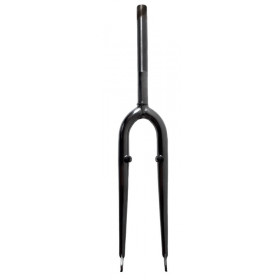 New product
New product -
 UsedFork Rock Shox Judy 29
UsedFork Rock Shox Judy 29- €79.99
-
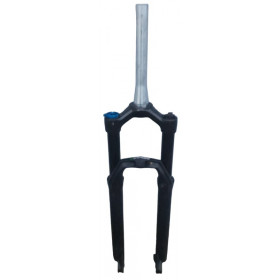 Used
Used -
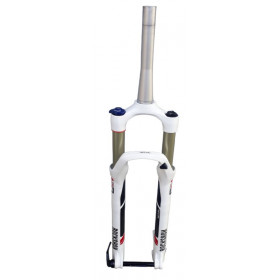 New product -40%Fork Rock Shox Recon RL gold 29 solo air 100 mm
New product -40%Fork Rock Shox Recon RL gold 29 solo air 100 mm- €233.99
- €389.99
-
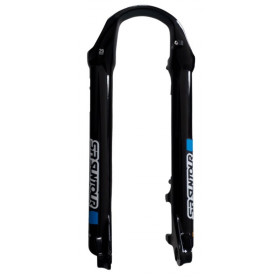 New product
New product -
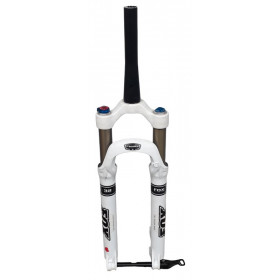 More detailsUsed Out-of-StockFox 32 RL fork 26 inches
More detailsUsed Out-of-StockFox 32 RL fork 26 inches- €229.99
Showing 1-7 of 7 item(s)
Features of mountain bike forks
1. Suspension type:
Mountain bike forks can be spring-suspension, air-suspension, or, more rarely, rigid-suspension.
- Spring forks: Used for their durability and shock resistance, they are less light but provide good shock absorption.
- Pneumatic forks: Lighter and adjustable, they use air as a spring. They are popular in cross-country and trail riding because they allow precise pressure adjustment depending on weight and terrain.
- Rigid forks: Without suspension, they are sometimes used in urban or gravel mountain biking for their lightness and efficiency.
2. Travel:
This is the distance that the fork can travel during compression.
- 100 to 120 mm: Travel for cross-country, sufficient for moderate trails.
- 130 to 160 mm: Typical travel for trail and all-mountain, offering good shock absorption and a balance between uphill and downhill.
- 170 mm and above: For enduro and downhill, these forks are designed to absorb big shocks and provide optimal control on very technical terrain.
3. Manufacturing materials:
- Aluminum: Aluminum is commonly used for fork sliders (lower part) because it is lightweight, affordable and durable.
- Carbon: More expensive, carbon is primarily used for cross-country forks due to its light weight. It saves weight, improving maneuverability.
- Steel: Rarer today, steel is robust but heavier, often used for rigid forks on certain gravel or fat bikes.
4. Adjustment system:
Modern forks allow suspension to be customized with specific settings for each rider and terrain type.
- Compression Adjustment: Allows you to adjust the resistance of the fork during impact, with low and high speed compression options.
- Rebound Adjustment: Controls the speed at which the fork returns to position after an impact, important for maintaining control over rough terrain.
- Preload: Only on spring forks, it adjusts spring firmness to match rider weight and terrain.
5. Lock Technology:
Some forks have a locking system, allowing you to lock the suspension to maximize efficiency when climbing or on flat surfaces. Riders can control it from the handlebars (remote lockout) or directly on the fork.
6. Steering column diameter and wheel size:
- The forks are compatible with different wheel sizes (26", 27.5" and 29"). The choice depends on the bike and the practice, as larger wheels provide stability, while smaller wheels promote agility .
- Steerer: Common diameters are 1"1/8 and 1"1/2, but some modern forks have a tapered column (1"1/8 at the top and 1"1/2 at the bottom) for better fit and increased rigidity.
Specificities for each type of mountain biking practice
1. Cross-Country (XC):
- Lightweight and efficient fork with travel generally between 100 and 120 mm for better pedaling efficiency and reduced weight.
- Air suspension for precise adjustments.
- Possibility of locking for climbs or flat sections.
2. Trail / All-Mountain:
Travel of 130 to 150 mm, offering a good compromise between shock absorption and agility.
- Fork designed for optimal versatility, suitable for technical climbs and descents.
- Rebound and compression adjustment system to adjust the fork according to the type of trail.
3. Enduro:
- Travel of 160 to 180 mm, designed to absorb significant shocks and rapid descents.
- Fork often heavier, but ultra-resistant and very responsive for aggressive terrain.
- Very precise suspension settings to allow fine steering on technical descents.
4. Descent (DH):
- Travel greater than 180 mm, designed to handle jumps, rocks and the roughest terrain.
- Double T system for structural reinforcement, increasing stability and control.
- Advanced compression and rebound adjustments for optimal control even on the most extreme terrain.
5. Gravel and Fat Bike:
- Rigid or short-travel fork: Gravel bikes opt for rigid or light-travel forks for cushioning, especially in mixed terrain.
- In Fat Bike, the fork must support very wide tires and sandy or snowy terrain, sometimes requiring special suspension for optimal comfort.
In summary
Mountain bike forks are a central element that determines performance, comfort and safety on off-road trails. The choice of fork must be made according to the discipline and type of terrain. A good adapted fork allows better control, effective shock absorption, and optimizes the riding experience for all types of rides and intensities.
To find out more:
Carbon bike fork
Vintage bicycle fork
Decathlon bike fork
26 inch bike fork
